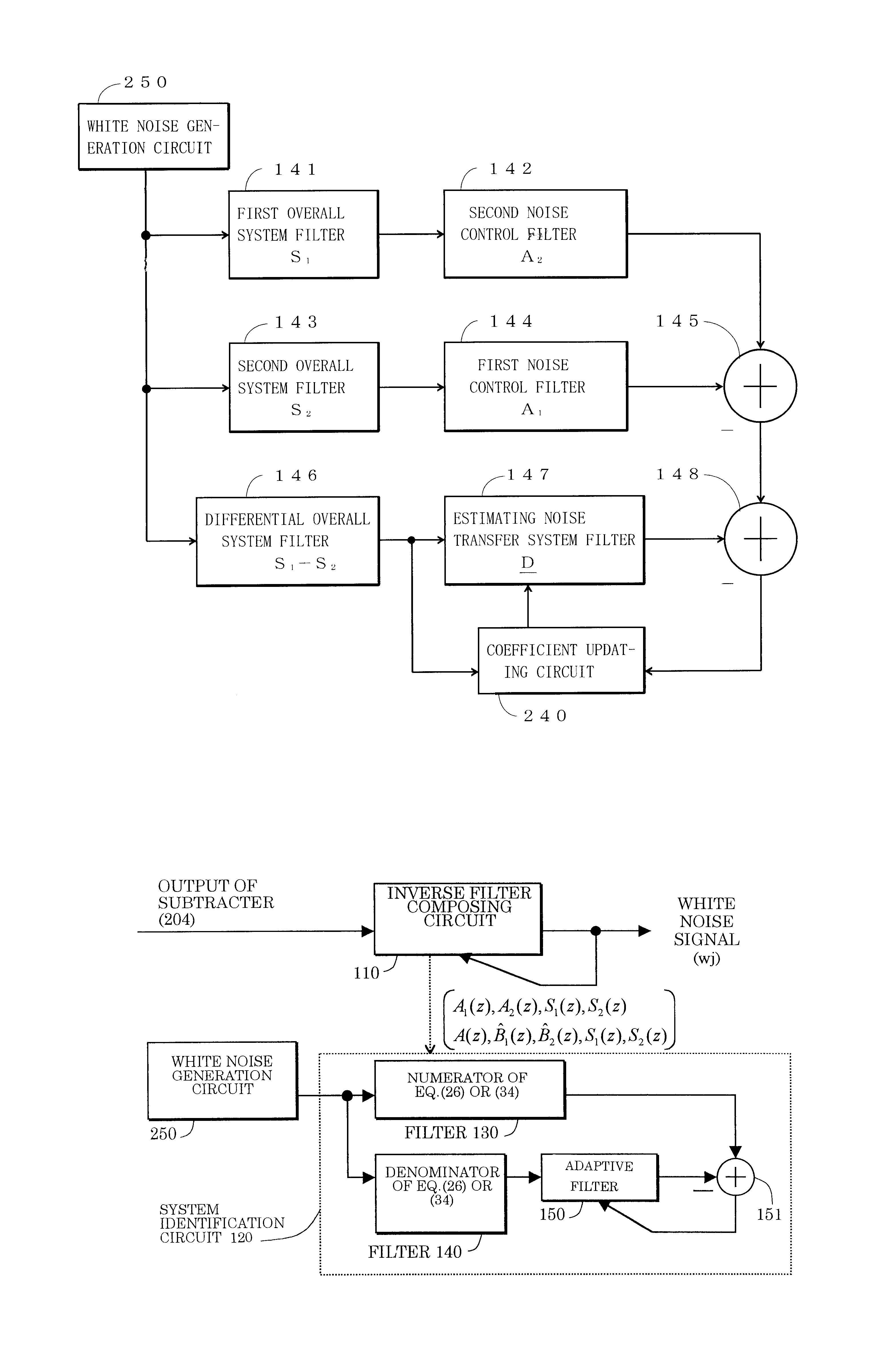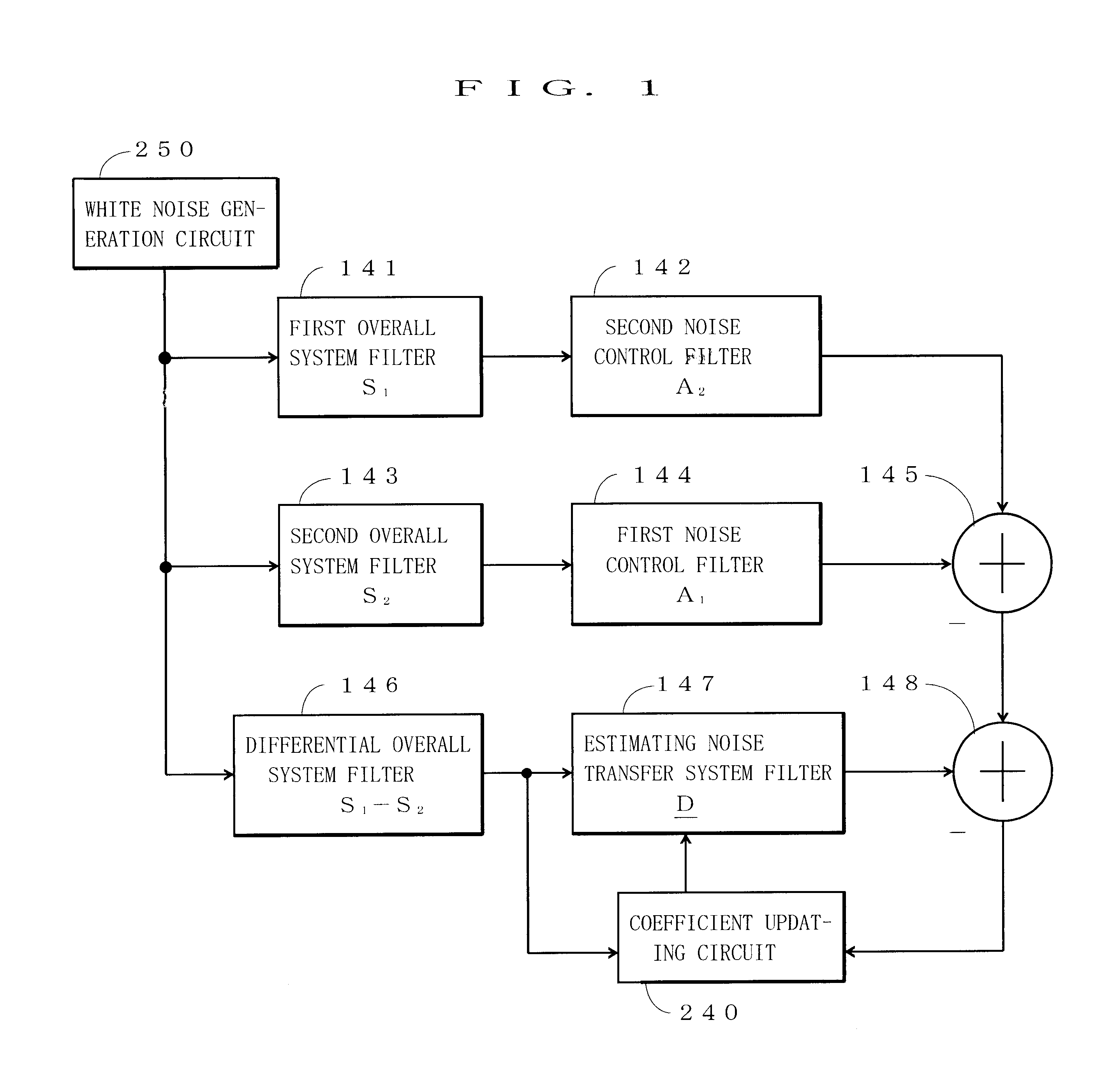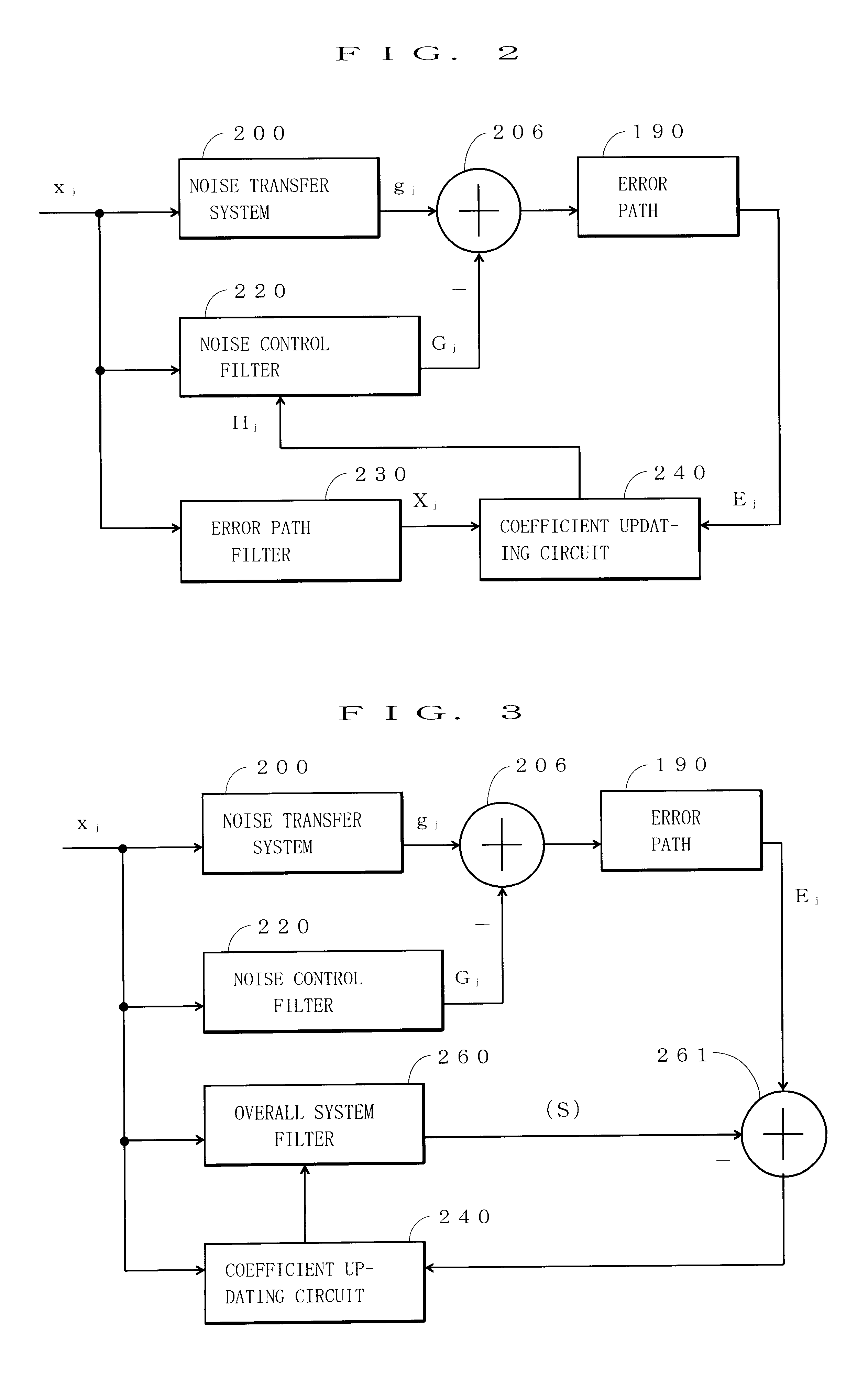Active noise control apparatus
- Summary
- Abstract
- Description
- Claims
- Application Information
AI Technical Summary
Benefits of technology
Problems solved by technology
Method used
Image
Examples
Embodiment Construction
FIG. 8 shows an embodiment of an active noise control apparatus according to the present invention [1]. This embodiment is composed of a duct 200 as a noise transmission system, a noise detecting microphone 201 for detecting a noise flowing through the duct 200, an error detecting microphone 202 provided at an outlet end of the duct 200, a loud speaker 203, provided oppositely to the microphone 202, for outputting a secondary noise to the duct 200, and a computer 300 for generating the secondary noise provided to the loud speaker 203 based on a noise signal detected at the microphone 201 and an error signal detected at the microphone 202.
FIG. 9 is a flow chart of a simulation process in the above-mentioned computer 300 for confirming the effectiveness of the active noise control apparatus according to the present invention whose principle is shown in FIG. 1. The operation of the embodiment of the present invention shown in FIG. 8 will be described by referring to this flow chart and...
PUM
 Login to View More
Login to View More Abstract
Description
Claims
Application Information
 Login to View More
Login to View More - R&D
- Intellectual Property
- Life Sciences
- Materials
- Tech Scout
- Unparalleled Data Quality
- Higher Quality Content
- 60% Fewer Hallucinations
Browse by: Latest US Patents, China's latest patents, Technical Efficacy Thesaurus, Application Domain, Technology Topic, Popular Technical Reports.
© 2025 PatSnap. All rights reserved.Legal|Privacy policy|Modern Slavery Act Transparency Statement|Sitemap|About US| Contact US: help@patsnap.com



